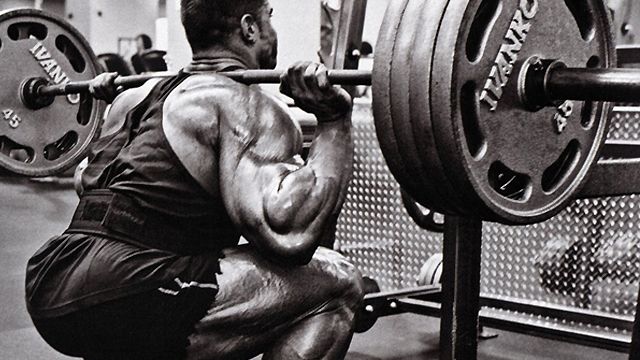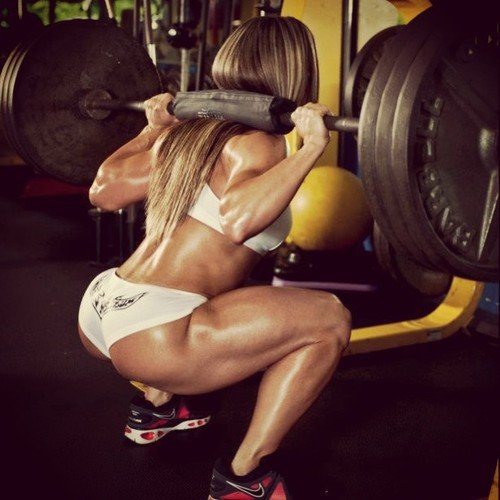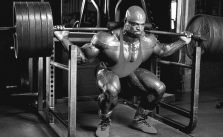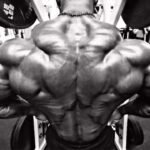The main goal for every one of us going to the gym is to build muscle and get in the best shape we can, old school bodybuilders like Arnold Schwarzenegger and many others were following a certain training plan that still brings the best results for people trying to gain mass and size, and this is “The Blueprint to Mass“.
The Blueprint to Mass is the simple training plan that exists on the internet that has the best results you can get from any other workout program.
In today’s article, I will just give you The Blueprint to Mass for free and well explained for maximum results.
Full body workout is one of the simplest and best forms of strength training for beginners and advanced athletes.
Whether you want to look better or to become a real bodybuilder, a full body workout 3 times a week, can get you faster results.
In addition, you can concentrate fully on your exercise.
Even for advanced and professionals, this type of training “full body workout” can make sense in different situations. However, you must always be careful to have the volume under control.
This Blueprint to Mass will be focusing on a full body workout because of its effectiveness and the fast results.
The Blueprint to Mass: What Is Full Body Workout?

In a full body workout, your entire musculature is trained at each training session. In contrast, “split” training involves training only specific muscle groups per session (for example, only “shoulders” or “chest and biceps”).
The third category is alternating full body workout plan although you train the same muscles in each training session, with different exercises and varying loads for individual muscles.
Which training plan is right for you? How many times a week?
- You have only 2 times a week to train? Then make a full body workout plan, as described here.
- You want to train 3 times a week? Then choose an alternate full body workout plan, such as the FE Muscle Building Plan (Focus on Muscle Growth) or Starting Strength / 3 × 5 Program (Focus Force & Mass).
Blueprint to Mass: Full body workout plan with free weights
| Sets-Reps | Exercise | Target muscles |
|---|---|---|
| 2-3×8 | squats | (Legs, trunk) |
| 2-3×8 | bench Press | (Chest, shoulders, triceps) |
| 2-3×8 | deadlift | (Legs, trunk, lower back) |
| 2-3×8 | shoulder Press | (Shoulders, triceps) |
| 2-3×8 | rowing | (Back, biceps) |
| 2-3×8 | pull-ups | (Back, biceps) |
If for various reasons it is not possible for you to train with free weights, you can fall back on a full body workout plan with machines:
| Sets-Reps | Exercise | Target muscles |
|---|---|---|
| 2-3×8 | leg press | (Legs, trunk) |
| 2-3×8 | chest press | (Chest, shoulders, triceps) |
| 2-3×8 | rowing machine | (Back, biceps) |
| 1-2×8 | hamstrings | (back, thighs) |
| 2-3×8 | shoulder Press | (Shoulders, triceps) |
| 2-3×8 | lats | (Back, biceps) |
| 2-3×8 | hyperextension | (lower back, rear thighs) |
How many times a week?
Perform this plan 2-3 times a week. 4 times is too much, 1 time is too little. Overload and underload have nothing to do with muscle growth.
How many sets and repetitions?
If you run the full body workout twice a week, do 3 sets of 8 repetitions of each exercise. Do the full body workout 3 times a week, then choose 2 sets of 8 reps. The training frequency (as often) correlates negatively with the training volume (how many: Sets x Reps.). If you increase one variable, the other sinks.
Rest between sets
The rest between sets should be so long that you can finish the next set with a clean technique. A guideline is 2-3 minutes.
How much weight to start within a full body workout?
If you have never moved weights, start with squats and deadlifts with 50% of your body weight. For the bench press, rowing and shoulder press, you start with 30% of your body weight. (Attention: A 220cm long barbell usually weighs 20kg alone).
With the pull-ups, you have to start with bodyweight. In week 1 try to create only one set with 8 reps. If you are unable to do so after 4 weeks, take a break, then take another 2 weeks, pause and again 2 weeks (4 + 2 + 2 = 8). The next week you try this with 2 sets of 8 repetitions. After a short time, you can then perform 2 × 8 or 3 × 8 pull-ups in one go.
Increase weight
The key to the success of any form of training is increasing the weights and/or sets and repetitions. As a beginner, you can increase the weights very quickly. Not infrequently from workout to workout.
Once you have completed all the required sets with clean technique, increase the weight at the next workout. +5 kg for the leg exercises, +2.5 kg for the smaller muscle groups.
Question: Are squats and deadlifts not too hard in a training session?

As a beginner, this is usually not a problem. If you move higher weights, however, the load on your lower back may be too high. In this case, you can use the combination squat + stretched or Romanian deadlift (“RDL” or “SLDL”) or leg press + deadlift.
You can also alternate the two practice pairs in each training session. The number of repetitions and sentences remains the same – as in the original exercises.






Leave a Reply